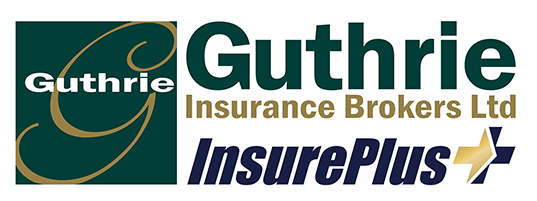During a major rain and wind storm, damage to buildings; such as roof shingles and windows, may occur and flooding and power outages are possible. Every year, homes are damaged by weather-related events, and homeowners are subjected to the considerable costs and stress that result. Please see our damage prevention tips below to protect yourself and your property from extreme weather.
Wind & Water Damage Prevention Tips
1. Pick up around your yard
•Pick up or secure any loose items stored outside or belongings in your backyard as these can become flying debris which can cause damage and personal injury.
•Store these items in your home, garage or shed.•If you have a pool, consider tying down a tarp over your pool to prevent debris entering or damaging your pool.
2. Prepare your home
•Have a licensed plumbing professional install an inline backwater valve to help prevent sewer back-up. Check with your municipality regarding any permits required or by-laws that may exist.
•Consider hiring a professional to install a sump pump to prevent groundwater from entering your basement. Check the sump pump regularly to make sure it is functioning properly. If you choose to install an electric sump pump, consider installing a battery-operated back-up in the event of a power outage.
•Keep your drains and toilets free of household grease and other foreign objects that can cause blockage.
•Know where your basement floor drains are, and keep them clear.
•Consider installing a leak-detector or high-water alarm.
•Check your hot water tanks to see if your tank shows signs of leakage, visible rust or dark water at the faucet.
•Know where your shut-off valves are—and how to turn them off in an emergency.
•Check all appliance hoses (washing machine, dishwasher, refrigerator, etc.). Consider replacing old ones with wire mesh hoses that include automatic water shut-off valves.
3. Check out the trees on your property•Inspect the trees on your property for loose or damaged branches.•If it’s unsafe for you to remove compromised branches on your own, call a professional to get the job done.
4. Regularly maintain downspouts and eavestroughs
•Check your eavestrough and downspouts every spring and fall to ensure that they are not blocked.
•Ensure downspouts discharge at least one meter from the side of your home and away from your neighbour’s property.
•Subject to municipality approval, disconnect any downspouts that are connected to the sewer system.•Install window wells on basement windows at or near ground level.•Have a licensed professional check your weeping tiles in case they are damaged or blocked.
•Consider having older clay piping replaced with metal, PVC or ABS pipes, as clay piping can get blocked with tree roots.
5. Inspect your roof for weaknesses•It’s imperative to routinely have your roof inspected for things like loose or damaged shingles, debris pileups, bare spots, and more. Contact a roofing contractor if shingles appear deteriorated or missing. •Visually inspect your roof twice each year. If you have a flat roof, have a roofing contractor make regular inspections.•Poor roofing conditions can allow water to enter your home and cause more wide-spread damage.•It’s safer to hire a professional instead of repairing your roof on your own. Please keep any receipts for your claim.
6. Know what to do during a flood
•Do not touch electrical wires, appliances or devices.
•If the sanitary sewer backs up into your basement, don’t flush the toilet or turn on any taps, even if you have installed a backwater valve. This will only cause further flooding.
•Never cross a flooded area. Fast water could sweep you or your vehicle away.
•If safe to do so, separate damaged property from undamaged property, and prepare an inventory of what has been lost or damaged.
•Take photographs of damaged property.
•Keep receipts of any clean-up costs incurred (e.g. wet/dry vacuum rentals, cleaning supplies, etc.).
7. Check weather stripping on doors and windows•Weather stripping keeps cold, windy drafts from making their way into your home, and prevents warm air from escaping. It also helps prevent water from entering your home.
8. Make sure your emergency supply kit is up to date. Here are some of the things you should consider putting in your emergency kit:
•3 days’ worth of water and nonperishable food for each member of your family.
•A manual can opener.
-A hand-crank or battery-powered radio so you can stay up to date on advisories.
•Cash, flashlights, and extra batteries.
•Food, water, and toys for your pets.
•Infant formula and diapers, if necessary.
•Entertainment such as books, magazines, and battery-power electronics.
•Medications, a first-aid kit, hand sanitizer, toilet paper, and trash bags.
•Solar chargers for cell phones and other electronics.
•Copies of important documents, like insurance policies, emergency contact info, and IDs.
•A warm blanket or sleeping bag for everyone in the family.
•At least one change of clothing.
•A fire extinguisher.
Be sure to store your kit in a place where it’s easy to grab and go.
9. Prepare for power outages
•Ensure your fridge and freezers are well stocked and open only when necessary.
•If you have a generator, prepare it for use – including checking fuel and oil levels and ensuring it is in proper running condition, prior to an outage.
•Have flashlights and blankets ready.
•Fill the bathtub with cold water, in case of extended periods without power.
•Ensure all technologies (laptops, smartphones, tablets, etc) are fully charged.
•Keep non-perishable foods stocked.
•Disconnect electronics to prevent electrical surges when power resumes.
•Have alternative plans to visit friends, family, a warming centre or a mall to stay warm.
10. Review your insurance policy
•Be familiar with what your policy covers you for. If you’re unsure, contact your insurer or broker to review and ensure you are adequately protected for the perils of extreme weather.
…and always “Be Safe Out There!”
The Advisors @ Guthrie Insurance Brokers Ltd




